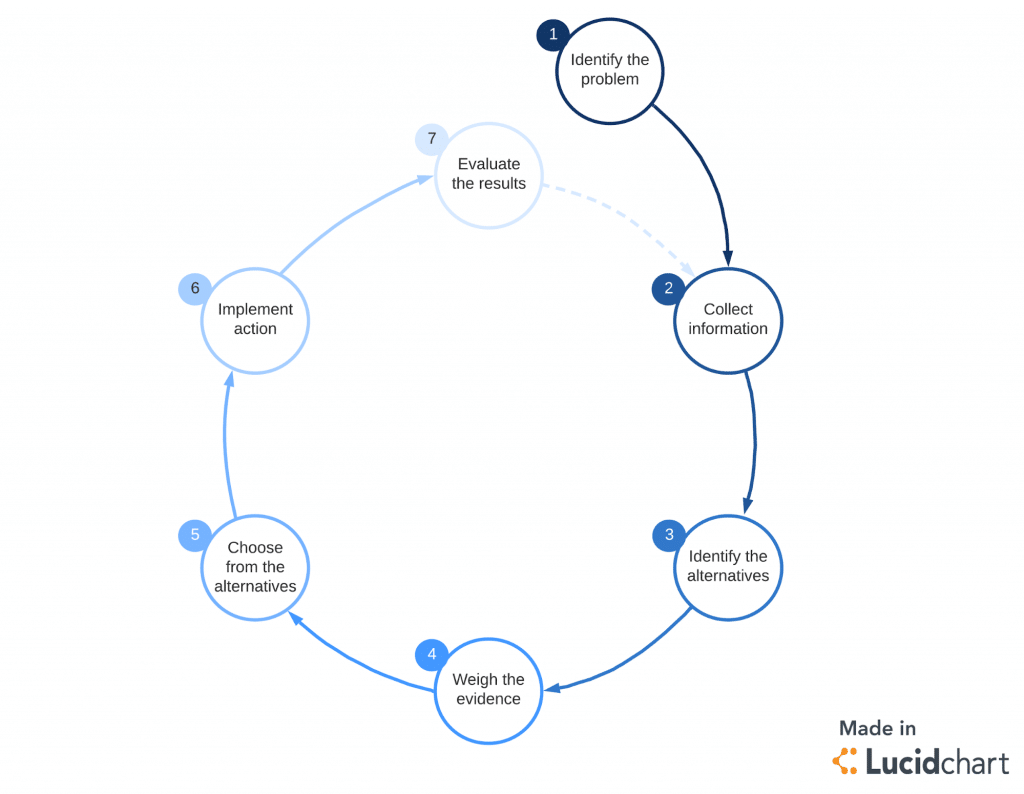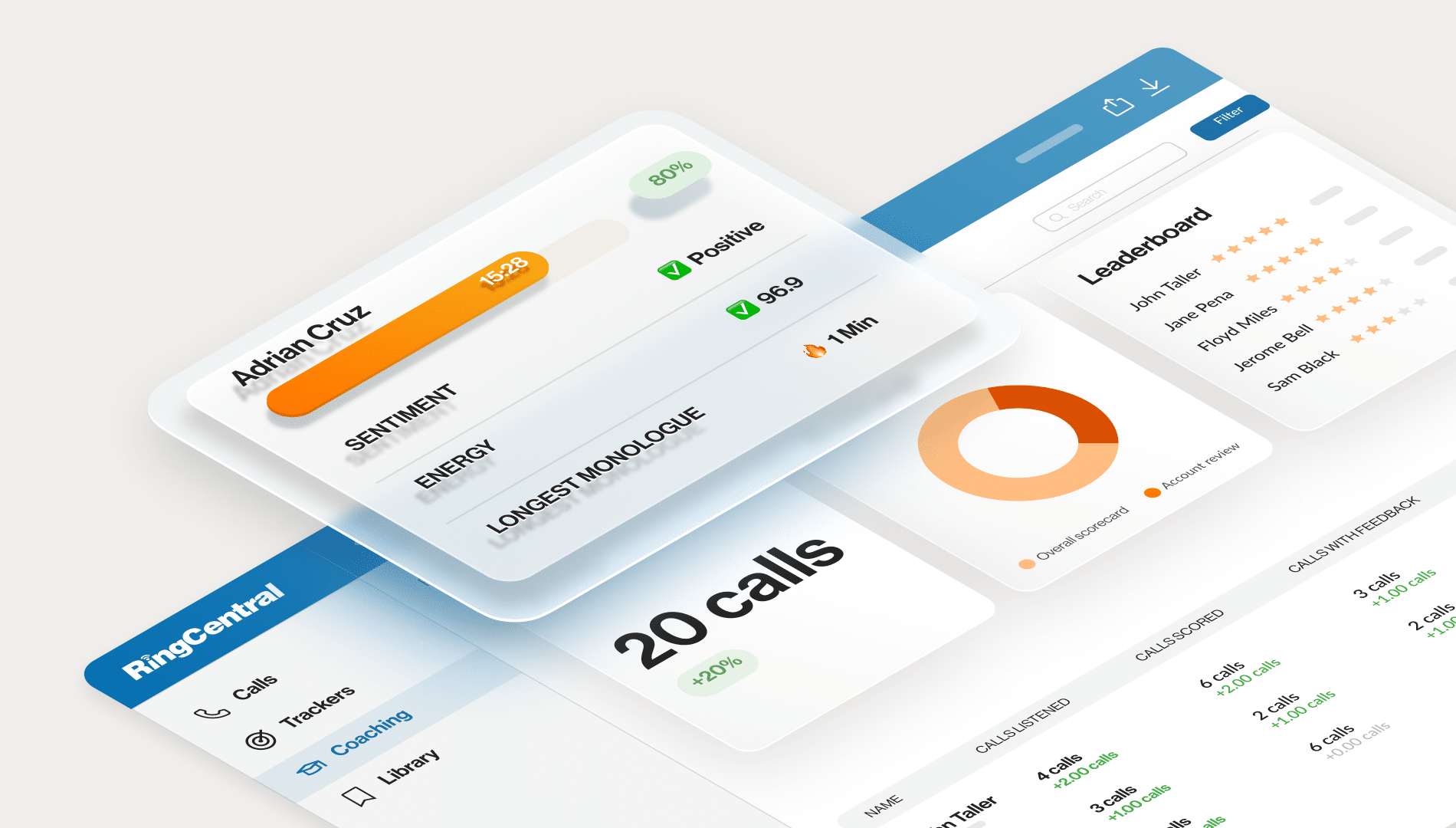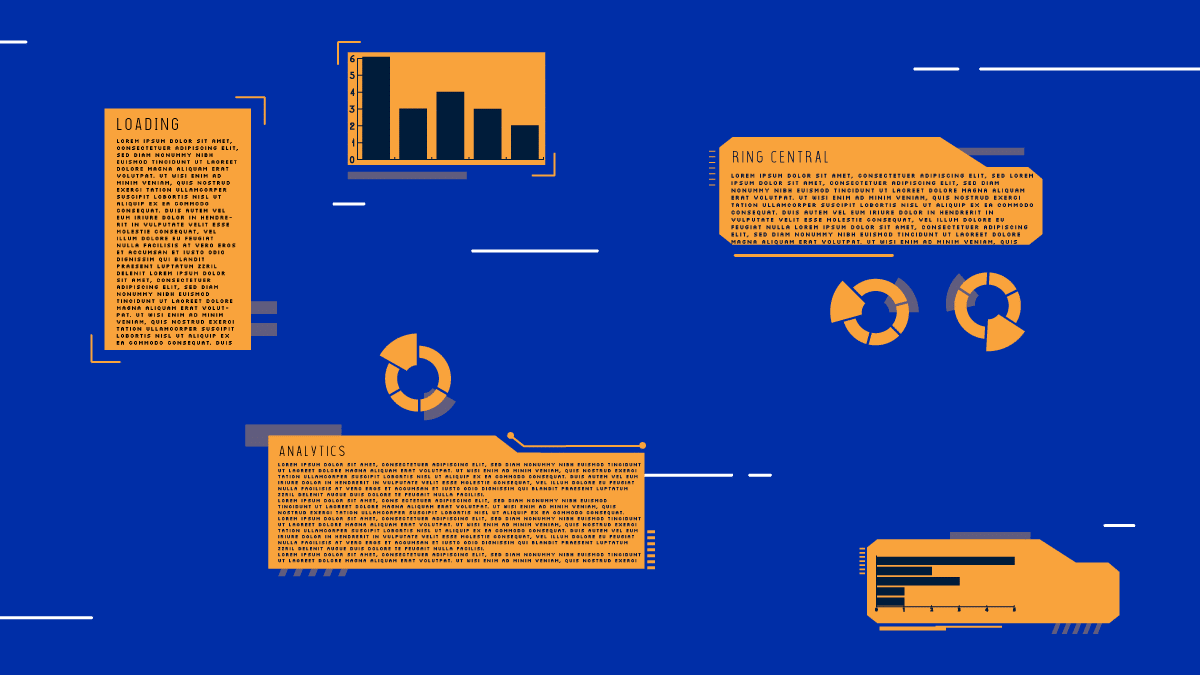Everyone loves a good statistic, so here’s one to start us off: 222%.
That’s how much customer acquisition costs rose from 2013-2022. It’s one of many mounting costs for modern businesses and a key reason investing in your team’s skills for customer service excellence will pay off.
Customers will come to you first if you deliver an exceptional customer experience. You can deliver an exceptional customer experience by making sure your customer service team makes helping customers a priority. Your team can make this a priority if they’re equipped with the right knowledge and capabilities.
What’s important for customer service is that your team has first-rate customer service skills.
In this post, we’ll look at this key way to attract and retain customers by exploring:
- What “customer service” is really about
- Why customer service is so important
- 5 soft skills you need to deliver excellent customer service
- 5 hard skills you need to deliver excellent customer service
⭐️⭐️⭐️⭐️⭐️ Ready to offer 5-star customer service? Get strategies for every stage of the customer journey with this free eBook.
What’s “customer service,” really?
The definition of “customer service” is basically the help and advice that you as a business provide to the people who buy or use your products and services. And this applies to your prospective customers, too.
It’s a combination of both service and skill set: to provide the service, you need a team with the right skills.
Here are some examples of good customer service skills:
- Communication
- Collaboration
- Patience
- Decision-making
- Empathy
- Digital awareness
- Customer management
- Product expertise
- Standardized practices
- Analytical understanding
Why is customer care important?
Customer service is crucial to attracting new customers and keeping existing ones.
Sales and marketing have a hand in this too, but customer service is a significant factor in purchase decisions. New customers are more likely to buy from you in the first place if they know you offer a first-rate customer experience. Plus, existing customers are more inclined to make future purchases if they receive that same great customer experience on an ongoing basis.
If customers keep coming back to you, then the amount of money each customer spends with your business rises. They buy more frequently and will probably generate positive word-of-mouth for you, which attracts more customers, and the cycle continues.
5 essential customer service soft skills
Let’s start with the most important soft skills for customer service.
These are elements of customer service that most people typically associate with “people skills” and relate more to how a person interacts with others.
They aren’t unique to any one specific job either. Having soft skills can make you a great fit for a wide range of occupations because they’re transferable.
Now, let’s look at five soft skills that are excellent customer service skills for your team to have and develop:.
1. Communication
To provide good customer service in traditional situations like on the phone and in person, the first rule is that you must speak clearly. But to provide great customer service, you must be a great communicator across all mediums—adaptability is essential.
Why?
Because customers no longer rely solely on the phone to talk to businesses. Reps should be skilled in communicating via other channels, too, like email, live chat, and managing tickets through a customer portal.
There’s also social media. You may be handling inbound social media messages on Twitter, Facebook, LinkedIn, and more.
And if you’re in a business that has “high-touch” (personal, one-on-one) relationships with customers or clients, you might do video conferencing calls with them. With these, body language and eye contact come into play.
🌟 Pro-tip:
Help your customer service team develop their communication skills by rotating staff regularly.
For example, you may have a customer service pro who’s super experienced with handling social media inquiries. But they may not be used to dealing with angry customers over the phone. This is why it’s helpful to cross-train your team, so anyone can pick up a conversation on any channel and deliver exceptional customer service.
And, don’t forget, communicating with your customers is important, but so is communicating with your own teammates.
Why? Because customer service is rarely a one-person show. Someone may have more context and information about a particularly difficult customer. You might need to reach out to your sales team to see if you can offer a discount to “save” a customer. Or you might need to double check with your marketing team to find out more about a certain promo or feature a customer saw in an email newsletter. Being able to talk to your own team is an often overlooked, but vital, part of providing good customer service.
The thing is, though, most companies don’t communicate well with each other. People might be in different time zones, they might be working from home, but the thing that we see most often is that everyone is using different tools. Teams might be using different apps for messaging, managing projects, video conferencing, etc. And when no one is talking to each other on the same tools, it makes collaboration hard.
So, what’s the fix?
It’s actually pretty straightforward. Try to incorporate every communication channel you use regularly into as few apps as possible. In other words: streamline.
For example, your first step could be moving your phone system to the cloud. The benefit of doing this is you can consolidate your business phone number along with other features like video conferencing software and team messaging,all into one system. Here’s how it looks in RingCentral’s desktop and mobile app, for instance:
🌟 Pro-tip:
Stratejm, an industry leader in cybersecurity, saved at least $75,000 annually by using RingCentral. John Menezes, the President and CEO, said as he didn’t have to buy, install, and maintain hardware and software or hire staff to manage and maintain it,RingCentral completely eliminated those setup and maintenance costs for them.
2. Collaboration
Working together as a team with a customer empowers you to do more with less—and more quickly. Seriously, we think every company should be doing this more, especially when dealing with tough customer problems.
Treat the customer as your partner. Interact with your customers on the platforms they use. Let’s say a heavy Twitter/X user has already explained their issue at length to you on Twitter/X. Would you ask them to explain themselves in detail again in an email, just because you prefer to email customers about problems?
By responding on your customer’s platform of choice, not only are you being considerate of their preferences, you’re almost certainly increasing the chances that your customer is fully engaged. They will be far more likely to give you all the details you need on that channel quickly. Remember, in the end, your goal is to resolve problems during the customer’s first contact with you.
But what if your customers all like using different platforms? What if you regularly get messages on Facebook and Twitter/X and email and live chat and LinkedIn and so on? Does that mean you and your team need to have all of those platforms open in different windows and tabs constantly?
There are tons of digital tools that are designed to help you deal with customers across all these platforms in one place.
For instance, let’s take RingCX™, which consolidates all these different channels of communication into one easy dashboard for you:

This lets you stay in your usual workflow and get the full picture of a customer’s relationship with your company without having to toggle between a bunch of different windows.
Being able to manage your conversations efficiently like this is especially important for social media. People expect responses faster on social, and you don’t want issues being up publicly on Twitter/X and Facebook for too long without a response from your company.
🕹️ Get a hands-on look at how small customer service teams are punching above their weight with RingCentral booking a product tour:
💰 You can also use this calculator to see roughly how much your business could save by using RingCentral to support your team’s communication with each other, clients, freelancers, and more.
3. Patience
Patience improves customer service in two main ways:
- Keeping calm and allowing a customer to explain their situation puts them at ease. If you interrupt a customer mid-sentence, you could cause unnecessary friction and set the customer experience off to a bad start.
- The ability to step back from a situation to assess all angles and possibilities will help your own decision-making.
If you find that you need to work on your patience, try to find the source of that impatience.
Maybe you may rush calls because you’re evaluated on your call times or the number of calls answered, which is very common. That measurement is often the source of impatience in a customer service environment.
To change that behavior, sometimes it’s helpful to just look at your metrics. See if extra time with customers improves customer satisfaction (CSAT). Often, the problem isn’t you, it’s time management!
4. Decision-making
Let’s say a contact center team is under pressure to end calls within a certain amount of time or to “hit targets” at the expense of providing a good customer service experience. What happens? The quality of their decision-making suffers.
And it can cost you, often, in ways you don’t even expect. Bad decisions can include anything from sending replacement equipment to the wrong address, to hurriedly telling a customer their problem isn’t solvable (or that it can be easily solved, when it can’t).
These types of wrong decisions aren’t just harmful in and of themselves. They also have several escalating consequences:
- Wasting time on repeat callers
- Low customer satisfaction
- Low customer retention rate
- Poor brand reputation
- Fewer case studies and testimonials
- Lower sales
If a customer’s question isn’t urgent, ask if you can place the call on hold while you quickly problem solve with a colleague or manager. That gives you a chance to analyze the best solution to the problem and come up with options to offer the customer. Yes, customers don’t like waiting, but which do you think they’d like less: waiting a little longer, or not getting the right answer for their problem?
By taking the time to make a well-informed decision, you can minimize the risk of repeat calls and unhappy customers.
When an urgent issue does come up, make sure you have a documented strategy for dealing with that kind of question. Try developing a flowchart of possible customer scenarios that you can walk through to a resolution.
The flow chart example below is a great starting point or build your own with tools like LucidChart or Visme:

5. Empathy
Another important customer service skill, empathy is the ability to understand the feelings of your customer. This skill is useful to have because it allows you to tap into your customers’ needs and desires.
Whether you’re on the phone or responding to a customer’s email, it’s important to empathize with them to establish trust. When a customer feels like you’re taking the time to understand their problem and find the best solution for them, it acts as a buffer that smooths over the rough parts of their complaint (and they might be forgiving later on too if you make a small mistake).
Empathy is about more than just listening to someone talk, it hinges on active listening and positive language.
For example, if a not-so-great customer service agent has a repeat caller, they may just follow the usual process for fixing the issue in question. Without active listening and attentiveness, they could miss important details. For example, the problem may have gotten worse or be slightly different this time.
With good listening skills, you’re keeping an ear out for signals of stress or anxiety. At the same time, you’re giving your customer verbal feedback to reassure them that you really are listening. A simple “yes” or “Could you explain more about that?” reassures the customer and could help you solve the problem more quickly, too.
If a customer is having trouble describing their issue, offer help instead of letting them struggle. You spend the majority of your day answering questions about specific goods and services. So, you’ll likely have better product knowledge and technical skills.
🌟 Pro-tip:
Try these empathy exercises to build your team’s empathy skills.
5 essential hard skills for customer service
Now let’s look at the hard skills that help teams provide great customer service.
Hard skills are teachable and measurable abilities like writing, reading, or the ability to use computer programs.
Often, they’re tailored to a specific job role or industry.
The top skills for customer service apply to many jobs that need customer interaction. Here are five important hard skills to master:
6. Digital awareness
A modern customer service strategy has to include online channels. You can’t get around it because that’s where most people are communicating with the companies they’re buying from.
There’s a saying in customer service: “Go where your customers are.”
To effectively communicate and work with your customers, get familiar with the tools they use.
If your customers like texting you, you should offer SMS and MMS as channels for them to contact you. The same goes for email, web chat, or social media.
Above all, give your customer service team an easy way to see all the customer conversations that everyone’s having. This way, anyone can pick up a thread without making a customer repeat themselves. And they won’t have to ask different people on the team about that customer’s past relationship with your business.
Again, RingCX is designed to help you do precisely this. Here’s a look at the platform in action:

7. Customer management
Communicating with your customers is one thing; managing them is another story.
Customer management generally comes in two forms:
- Managing customers to keep them calm and set expectations
- Managing customers that are waiting in a queue for an answer to their call
Keeping customers calm and setting expectations is important, and that has more to do with empathy. But you also have the opportunity to make the waiting experience better.
There are a few automation tools that can help. For example, a customer service platform like RingCentral should offer features call queuing, skills-based routing, and workforce management.
Call queuing allows you to route calls to the right agent every time, according to your own business rules, so customers spend less time queuing for the wrong customer service professional.
Skills-based routing means every customer gets the best available resource on every interaction, freeing up other resources to get on with their job rather than dealing with queries better placed elsewhere.
Workforce management optimizes schedules to ensure customers are not left in the cold during peak times.
🌟 Pro-tip:
See how PipelineDeals set up a call queuing system that rings simultaneously across their customer support team. They also monitor—via detailed reporting—how long it takes customer service representatives to answer calls. The result? A serious upgrade to their customer service.
8. Product expertise
Just as customer service reps need to be skilled in customer service, they need to be equally knowledgeable about the product being sold. It’s no good saying you have the “best customer service” if you can’t reliably solve your customers’ problems.
For simple queries, use the customer flow chart we mentioned earlier. If you keep getting the same questions, that’s a sign you should document these, so new hires can start resolving customer questions from day one (and more importantly, fix the problem with your product or process that’s causing the issue). Plus, if everything is written down, it becomes easier to teach and memorize.
For more complex questions, customer service reps could be trained to specialize in one product or area. That way, you can use skills-based routing, so customers get directed to the person best suited to handle their questions.
For example, customers who need help with maintenance can press 1 to get routed to a rep with maintenance experience. Someone who wants to renew their contract can press 2 to route to sales reps rather than the support team.
9. Standardized practices
Customer service qualifications—formal training, certificates, and courses—are helpful because they provide a recognized standard of expertise. And by participating in formal training, you can learn what other businesses do while improving your own practices.
Courses range from full-time to part-time, with apprenticeship schemes. They’re available online or in-person; the choice is yours depending on what your strengths and weaknesses are.
In general, continuous training is always helpful for career progression and keeping up with best practices.
10. Analytical understanding
The best customer services teams are often those driven by analytics. Historically, this was powered by spreadsheets and took hours to process.
But today, customer experience analytics are a core component of contact center software. Every call that enters your business is logged in the cloud.
Once logged, your contact center software analyzes those calls. The bottom line? You receive comprehensive reports that tell you where your customer service reps are doing well. The data also shows you where they need to improve their skills.

This type of reporting gives you a way to keep up with how you’re doing (or if you’re a manager, how your customer service agents are performing). These analytics are especially valuable during critical times for different businesses, like holidays, or back-to-school times, or large sporting events.
How to improve customer service skills
The service you deliver is only as good as your team’s skill set. Short of enrolling everyone in an intensive training course, what can you do to support them? Let’s look at how to enhance customer service skills and the service your company provides as a result:
Ask for feedback
Want to know how your reps’ skills stack up? Ask customers, ask line managers, ask reps themselves.
For customer feedback, post-interaction surveys are an ideal solution, whether in-app, over the phone, or via email. The interaction will be fresh in a customers’ mind, and they might just be more willing to share their thoughts right off the bat.
Just make sure questions are tailored to the answers you seek. Asking for feedback on product quality is great, but it won’t tell you much about your team’s strengths and weaknesses.
Instead, include sections for the customer to share the name of the rep who helped them, the time it took to resolve the issue (or whether the issue was resolved at all), and rate specific skills such as communication or product knowledge.
Line managers and even colleagues can also pick up on skills gaps you haven’t noticed, and you’d be surprised how many reps are aware of their own weaknesses. Give them an opportunity to share these, so you can support them in making improvements.
Listen in
There’s a reason many call centers are equipped with call recording capabilities. It’s like gathering feedback but you’re hearing it directly from the horse’s mouth.
Make use of these insights to analyze agents’ communication with customers:
- Do they listen actively and with empathy?
- How do they handle angry customers?
- How well do they understand the products and services you offer?
- If they’re unable to handle an issue, do they route customers to the right rep?
- Are they correctly using your phone software to close tickets or re-route tasks?
These nuggets of information are a great starting point for deciding which area agents need the most support with. They also tie in well with KPIs, so you can monitor their growth.
Practice, practice, practice
Learning on the job is a sure-fire way to grow, but there’s a lot to be said for the power of role-play off the job too. Colleagues can play out scenarios to practice skills like patience or demonstrate their technical know-how.
You can go beyond customer service basics here—dive into situations specific to your company and customers. If you’ve recorded calls, use them as a case study (whether they were successful or went sideways). Play them back and ask the team how they would’ve handled the call in that situation or what the rep did particularly well.
Empower your team
What makes great customer service great is having a team that feels confident, valued, and supported. Even if they tick every skill above, chances are they won’t provide a professional service if they’re not motivated to do so.
It helps to build a team that’s passionate about customer service. But you also need to regularly support and encourage them.
Make sure they have access to all the tools and documents they need to care for customers. Regularly offer customer handling tips and best practices to help them successfully manage customers. And consider implementing recognition or reward programs for those that go above and beyond.
More importantly, practice what you preach. Communicate with them, be patient with any reps that may be falling short, and make sure you have a comprehensive understanding of your company’s offering.
Mastering skills for customer service excellence
With a team that has strong customer service skills, your customers will love your brand even more.
Communication will always be one of the most important skills for customer service teams. The teams that communicate the best will outperform those that communicate poorly.
Of course, other soft skills are important, too, such as empathy, patience, decision-making, and collaboration, as well as hard skills like product expertise and standardized practices.
Just remember that great customer service skills aren’t always enough on their own. To manage customers well, you need to be powered by quality communications technology. See how RingCentral enables proactive customer service here.
FAQs
What are the most important customer service skills?
The best customer service agents combine a mixture of hard and soft skills. In other words, they’re technically proficient and knowledgeable about their work, while at the same time being masters of more intangible people-focused skills such as empathy, patience, and active listening.
What kind of training works best for improving customer service performance?
A personalized approach to boost both hard and soft skills is the most effective one. Monitor your agents’ performance and leverage data analytics to establish each agent’s strengths and weaknesses. Then, tailor the support and training they receive to strengthen any areas where there’s room for improvement.
Originally published Feb 03, 2024, updated Jul 03, 2024





